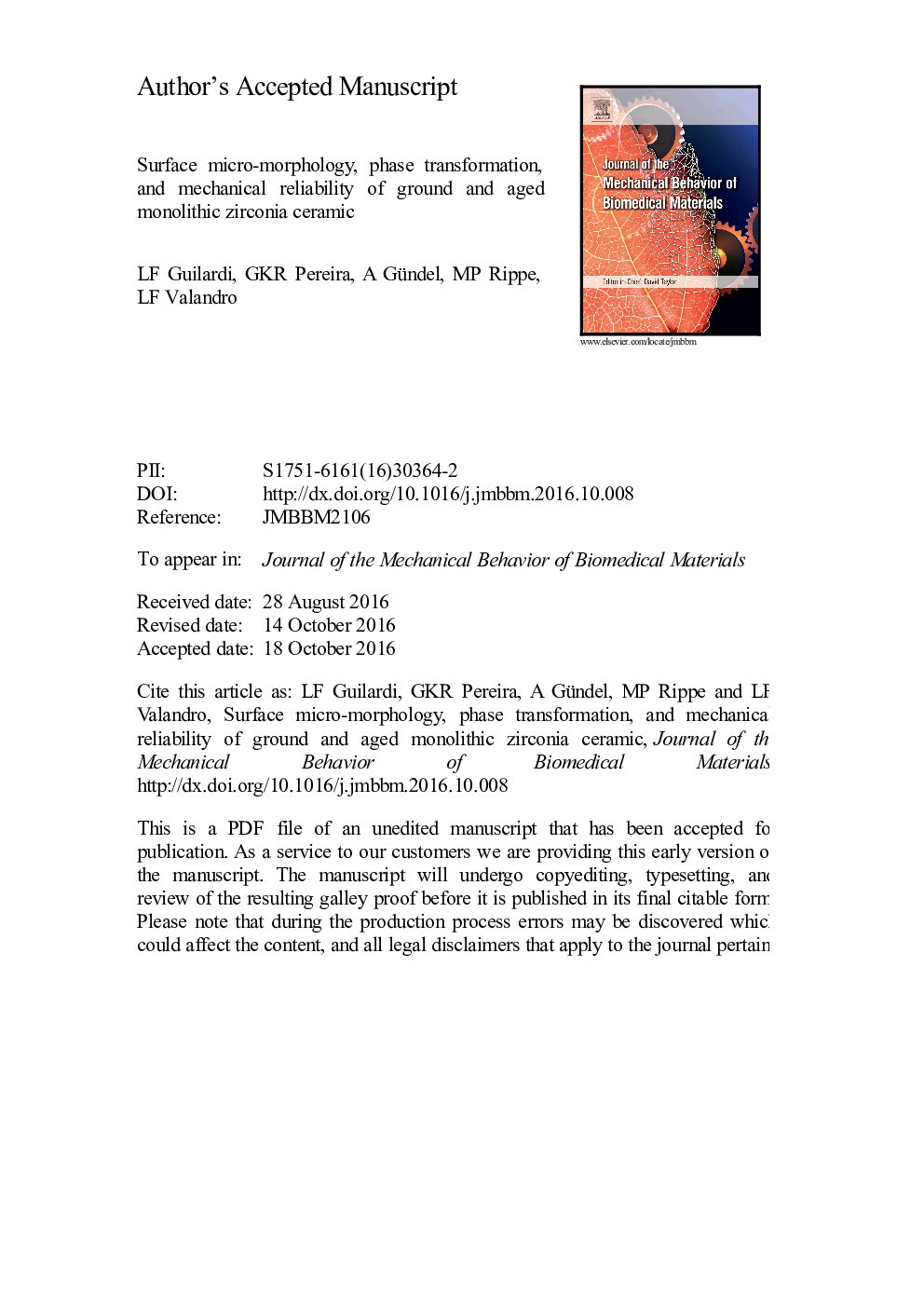| Article ID | Journal | Published Year | Pages | File Type |
|---|---|---|---|---|
| 7207658 | Journal of the Mechanical Behavior of Biomedical Materials | 2017 | 43 Pages |
Abstract
This study aimed to determine the effects of grinding and low temperature aging on the biaxial flexural strength, structural reliability (Weibull analysis), surface topography, roughness analysis, and phase transformation (tâm) of an yttrium-stabilized tetragonal zirconia polycrystalline ceramic. Ceramic discs (15.0Ã1.2±0.2 mm, VITA In-Ceram YZ) were prepared and randomly assigned into six groups according to 2 factors (n=30): 'grinding' (Ctrl - without treatment, as-sintered; Xfine - grinding with extra fine diamond bur - 30 µm; Coarse - grinding by coarse diamond bur - 151 µm), and 'aging' (without or with aging: CtrlLTD; XfineLTD; CoarseLTD). Grinding was performed in an oscillatory motion with a contra-angle handpiece under constant water-cooling. Low temperature degradation (LTD) was simulated in an autoclave at 134 °C, under 2 bar pressure, for 20 h. The roughness (Ra and Rz parameters) significantly increased after grinding in accordance with bur grit-size (Coarse>Xfine>Ctrl), and aging promoted distinct effects (Ctrl=CtrlLTD; Xfine>XfineLTD; Coarse=CoarseLTD). Grinding increased the m-phase, and aging led to an increase in the m-phase in all groups. However, different susceptibilities to LTD were observed. Weibull analysis showed a significant increase in the characteristic strength after grinding (Coarse=Xfine>Ctrl), while aging did not lead to any deleterious impact. Neither grinding nor aging resulted in any deleterious impact on material reliability (no statistical decrease in the Weibull moduli). Thus, neither grinding nor aging led to a deleterious effect on the mechanical properties of the evaluated Y-TZP ceramic although a high m-phase content and roughness were observed.
Related Topics
Physical Sciences and Engineering
Engineering
Biomedical Engineering
Authors
L.F. Guilardi, G.K.R. Pereira, A. Gündel, M.P. Rippe, L.F. Valandro,
